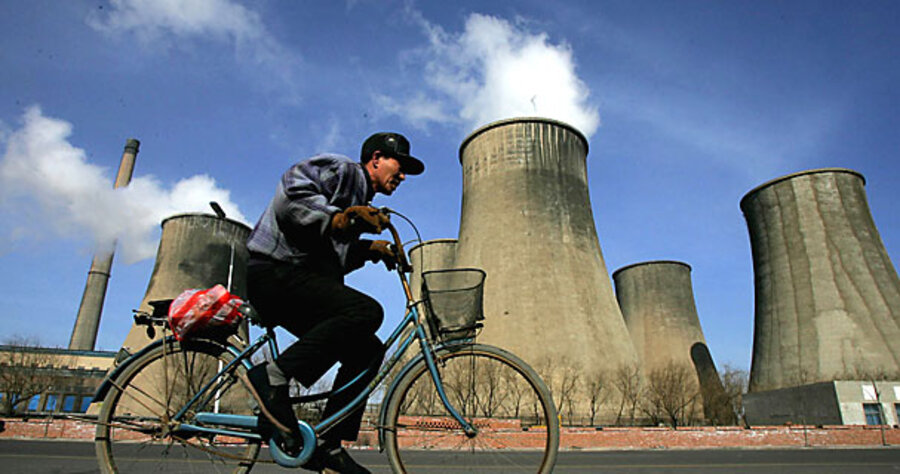"Carbon scrubber" could remove CO2 from the air
A group of US scientists has made a breakthrough in developing "carbon scrubbers" to remove excess CO2 from the atmosphere.
Led by Columbia University physicist Klaus Lackner and backed by a private company in Tuscon, Ariz., called Global Research Technologies, the team is working to build a giant "tree" that draws in air and passes it over an ion exchange membrane that traps the carbon dioxide. The gas could then be deposited underground, pumped into a greenhouse where it would help plants grow, or put to some other use.
The scientists say the device could remove about one ton of CO2 per day from the atmosphere. The average American produces about 20 tons of carbon dioxide each year, contributing to a total worldwide output of about 27 billion tons annually.
Scientists have speculated about such devices for a few years now (the BBC documented Lackner's efforts in early 2003), but were unable to find an inexpensive way of separating the trapped carbon from the absorber membrane. But the Guardian, which obtained one of Lackner's team's patent applications, reports that the scientists have recently discovered that passing humid air over the membranes causes them to "exhale" carbon dioxide. This development, say scientists, reduce the scrubber's energy use "tenfold."
The June issue of Smithsonian Magazine features a Q&A with Wallace Broecker, one of the lead scientists on this project. Broecker, the Columbia university climate expert who was the first to coin the term "global warming" in the 1970s, describes a device "about 6 to 10 feet in diameter, 50 feet high ... like a little silo, in that shape so the wind could blow through it from any direction."
He says that we would need roughly 17 million of these scrubbers to take care of carbon emissions from the United States. While they could operate anywhere, they would work best in deserts, Broecker says. That works out to about 60 million or so around the world. While that sounds like a lot, Broecker believes that carbon scrubbing may be our only hope, as humanity will need to continue burning fossil fuels for the short term.
I don't think anybody believes that alternatives will supply the energy we'll need. The long-term solution is solar electricity. But it is far too expensive—there have to be breakthroughs. If they were to occur in the next 10 or 20 years, great, we could put the whole CO2 -capture idea on the shelf. But we have to develop that technology, because it looks right now like solar energy is not going to become affordable in that time scale. We are going to need some way to bail ourselves out.
We have enough coal to run the planet for several hundred years. We could make gasoline out of coal for the equivalent of $50 a barrel. People are not going to use solar energy if it costs 10 times more than energy derived from coal. We are not putting enough resources into developing the technology to capture and store carbon. Everybody is worried about carbon footprints as if that is a solution. It's not. It is important, I'm not putting that down, but conservation in itself can't do it. The world has to run on energy.
According to the Guardian story, the team plans to demonstrate a prototype within two years.
The device could be eligible for Richard Branson's Virgin Earth Challenge prize, a competition offering $25 million to whoever can come up with a way to remove at least one billion tons of carbon dioxide a year from Earth's atmosphere.





